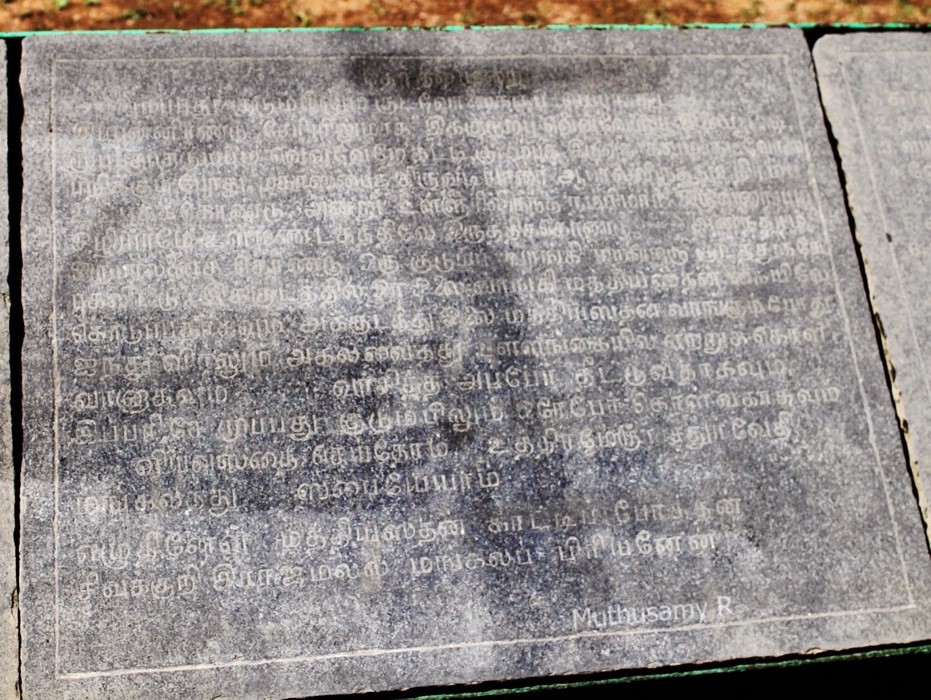Description

Disclaimer: Copyright infringement not intended
Context
Prime Minister Modi referred to the Uttaramerur inscription in Kanchipuram, Tamil Nadu, while discussing India’s democratic history.
About Uttaramerur
- Uttaramerur lies in present-day Kanchipuram district.
- It is known for its historic temples built during Pallava and Chola rule.
- The famous inscription from Parantaka I’s reign is found on the walls of the Vaikunda Perumal Temple.
About Uttaramerur inscription
- An 1,100 years old inscription from Tamil Nadu, built during the reign of Chola king Parantaka I, describes processes of village self-governance.
- India is the world’s oldest democracy, it is the mother of democracy. There are numerous historical references to this. An important reference is Tamil Nadu
- The inscription found there is like a local constitution for the gram sabha.
- It tells how the assembly should be run, what should be the qualification of members, what should be the process to elect the members, and how a member would be disqualified.
- While Uttaramerur has multiple inscriptions spanning centuries, the most famous one is from the reign of Parantaka I (907-953 AD).
What does it say?
- The inscription gives details of the functioning of the local sabha, i.e. the village assembly.
About the Sabha
- A sabhawas an assembly exclusively of brahmans and had specialised committees tasked with different things.
- There will be 30 wards.
- Everyone living in these 30 wards would assemble and select one representative for the village assembly.
- All those eligible and willing would write their names on palm leaf tickets following which, the representative would be chosen on the basis of an elaborate draw of lots, conducted by priests in the inner hall of the building where the assembly meets.
Qualifications
- These include ownership of a certain amount of land, having a house, being between the age of 35 and 70 and “knowing mantrasand Brahmanas” (from the Vedic corpus).
- An exception can be made on land ownership if the person has learnt at least “one Veda and four Bhashyas”.
- One must also be “well-versed in business” and “virtuous”.
Disqualification
- These include, “not having submitted accounts” while previously serving in a committee, committing any of the first four of the five ‘great sins’ (killing a brahman, drinking alcohol, theft and adultery), being associated with outcastes, and eating ‘forbidden’ dishes.
Responsibilities
- The inscription describes a number of important committees within the sabhawith their own distinct functions.
- These include, the garden committee, the tank committee, the annual committee (an executive committee which required prior experience and knowledge to be a part of), the committee for supervision of justice (for supervising appointments and wrong doing), the gold committee (in charge of all the gold in the village temple) and the five-fold committee (its role is unclear in the inscription).
|
Name
|
Number of members
|
Meaning
|
|
Samvatsara-Variyam
|
12
|
Annual Committee
|
|
Totta-Variyam
|
12
|
Garden Committee
|
|
Eri-Variyam
|
6
|
Tank Committee
|
|
Panchavara-Variyam
|
Unknown
|
Standing Committee
|
|
Pon-Variyam
|
Unknown
|
Gold Committee
|
- These committee assignments would last for 360 days after which the members would have to retire.
- Anyone in the committee who was implicated in any wrongdoing, such as forgery or having ridden an donkey (i.e. being punished for a crime), was removed instantly.
- Also, the inscription emphasises upon the keeping of accounts – any discrepancy can also disqualify members of the sabha
Link of the inscription with democracy
- It is far from a truly democratic system.
- Not only does it restrict sabha membership to a tiny subsection of land-owning brahmans, it also does not have true elections.
- Rather, it chooses members from the eligible pool of candidates through a draw of lots.
About Parantaka Chola I
- Parantaka Chola I was a Chola emperor who ruled for forty-eight years, annexing Pandya by defeating Rajasimhan II and in the deccan won the battle of Vallala against Rashtrakutas which happened before 916 CE.
- The best part of his reign was marked by increasing success and prosperity.
Extent of Parantaka I's influence
- Parantaka's dominions comprised almost the whole of the Tamil country right up to Nellore in Andhra Pradesh.
- It is clear from other Chola grants that Parantaka I was a great militarist who had made extensive conquests.
Civic and religious contributions
- The copper-plate inscriptions detail Parantaka I's promotion of agricultural prosperity by the digging of numerous canals all over the country.
- He also utilised the spoils of war to donate to numerous temple charities.
- He is reported to have covered the Chidambaram Siva Temple with golden roof
|
PRACTICE QUESTION
Q) While the Uttaramerur inscription gives details of local self-governance, it is far from a truly democratic system. Do you agree? Justfiy. (250 words)
|

https://indianexpress.com/article/explained/explained-history/uttaramerur-inscription-pm-modi-8556704/















